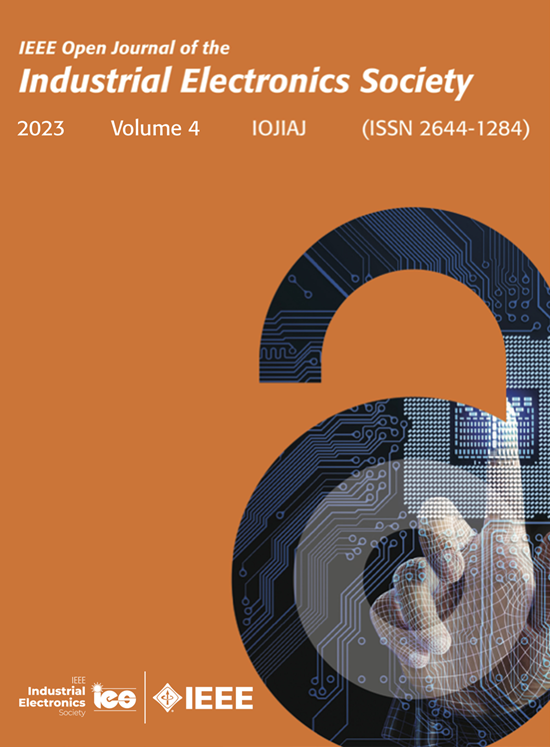Visualization Approach for RAMI 4.0 Value Chain Analysis
IF 4.3
Q1 ENGINEERING, ELECTRICAL & ELECTRONIC
IEEE Open Journal of the Industrial Electronics Society
Pub Date : 2024-12-19
DOI:10.1109/OJIES.2024.3520410
引用次数: 0
Abstract
Industry 4.0 has revolutionized industrial automation, with models, such as Industry 4.0 Reference Architectural Model (RAMI 4.0), providing a structured framework for optimizing value chains and processes. However, the complexity and abstract nature of RAMI 4.0 have limited its practical application, especially due to the lack of clear visualization methods to understand industrial ecosystems. Effective visualization is essential to translate this framework into actionable insights, enabling stakeholders to grasp system interactions, dependencies, and value-creation processes. This article proposes a multidimensional visualization approach, illustrated through a smart heat pump example, to map information and operational technologies, their interactions, and value chains. Combining 3-D visualizations for integrated system overviews with 2-D visualizations for task-specific analysis, the approach provides a comprehensive understanding of RAMI 4.0 value chains, enabling stakeholders to address their analytical needs with clarity. It facilitates run-time value chain analysis, offering real-time insights for decision-making during operations. The approach maps industrial systems across RAMI 4.0 axes and aligns them with engineering processes and lifecycle phases, enabling the exploration of system interactions, dependencies, and stakeholder contributions. This supports the analysis of engineering and business processes, optimizes infrastructure, and facilitates smooth technological transitions. It enhances RAMI 4.0’s utility for real-time decision-making and operational efficiency, boosting competitiveness in industrial ecosystems.RAMI 4.0价值链分析的可视化方法
工业4.0已经彻底改变了工业自动化,其模型,如工业4.0参考体系结构模型(RAMI 4.0),为优化价值链和流程提供了结构化框架。然而,RAMI 4.0的复杂性和抽象性限制了其实际应用,特别是由于缺乏清晰的可视化方法来理解工业生态系统。有效的可视化对于将这个框架转化为可操作的见解是必不可少的,它使涉众能够掌握系统交互、依赖关系和价值创造过程。本文提出了一种多维可视化方法,通过一个智能热泵的例子来说明,以映射信息和操作技术、它们的相互作用和价值链。该方法结合了用于集成系统概述的3-D可视化和用于特定任务分析的2-D可视化,提供了对RAMI 4.0价值链的全面理解,使利益相关者能够清晰地解决他们的分析需求。它促进了运行时价值链分析,为操作期间的决策提供实时见解。该方法跨RAMI 4.0轴绘制工业系统,并将它们与工程过程和生命周期阶段对齐,从而能够探索系统交互、依赖关系和涉众贡献。这支持对工程和业务流程的分析,优化基础设施,并促进顺利的技术转换。它增强了RAMI 4.0的实时决策和运营效率,提高了工业生态系统的竞争力。
本文章由计算机程序翻译,如有差异,请以英文原文为准。
求助全文
约1分钟内获得全文
求助全文
来源期刊

IEEE Open Journal of the Industrial Electronics Society
ENGINEERING, ELECTRICAL & ELECTRONIC-
CiteScore
10.80
自引率
2.40%
发文量
33
审稿时长
12 weeks
期刊介绍:
The IEEE Open Journal of the Industrial Electronics Society is dedicated to advancing information-intensive, knowledge-based automation, and digitalization, aiming to enhance various industrial and infrastructural ecosystems including energy, mobility, health, and home/building infrastructure. Encompassing a range of techniques leveraging data and information acquisition, analysis, manipulation, and distribution, the journal strives to achieve greater flexibility, efficiency, effectiveness, reliability, and security within digitalized and networked environments.
Our scope provides a platform for discourse and dissemination of the latest developments in numerous research and innovation areas. These include electrical components and systems, smart grids, industrial cyber-physical systems, motion control, robotics and mechatronics, sensors and actuators, factory and building communication and automation, industrial digitalization, flexible and reconfigurable manufacturing, assistant systems, industrial applications of artificial intelligence and data science, as well as the implementation of machine learning, artificial neural networks, and fuzzy logic. Additionally, we explore human factors in digitalized and networked ecosystems. Join us in exploring and shaping the future of industrial electronics and digitalization.
 求助内容:
求助内容: 应助结果提醒方式:
应助结果提醒方式:


